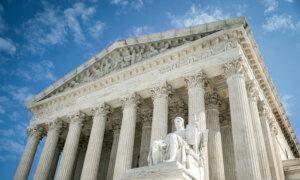The Biden administration appeared to make major changes to its new student loan relief plan after the initial plan was struck down by the U.S. Supreme Court earlier this year.
The first student loan proposal, announced by President Joe Biden, would have promised up to $20,000 in debt relief for low- and middle-income individuals. The Supreme Court struck that down in June.
“President Biden and I are committed to helping borrowers who’ve been failed by our country’s broken and unaffordable student loan system,” Secretary of Education Miguel Cardona said in a statement about the proposal. “These draft proposals would build on the historic $127 billion in loan forgiveness the Biden-Harris Administration has already approved for nearly 3.6 million borrowers. We are fighting to ensure that student debt does not stand in the way of opportunity or prevent borrowers from realizing the benefits of their higher education.”
However, the DOE has yet to release the full details of the plan, saying that it wants to cancel some or all student debt for borrowers whose balances exceed what they originally owed; those who have loans that entered repayment 25 or more years ago; those who used loans to attend career-training programs that led to “unreasonable” debt loads or insufficient earnings; or those who are eligible for other loan forgiveness programs but did not apply.
A fifth group is also being discussed, or “those who are experiencing financial hardship that the current student loan system does not currently adequately address,” the DOE said.
The draft does not include details about how many borrowers would be impacted by the federal government’s latest plan. It also did not include details about how much it may cost.
The DOE stated it will continue to refine the proposal as it goes through a federal rulemaking process. The public will be able to provide written feedback next year. The draft proposal would give the department authority to wipe away federal student loans entirely for borrowers in some categories.
The Biden administration has canceled more than $120 billion in federal student loan debt via existing student loan forgiveness programs for specific individuals.
Previously, the president called for a plan to help “as many borrowers as possible,” but his administration seems to be moving away from the type of mass cancellation that he promised in August 2022. That plan was estimated to cost $400 billion. It’s unclear how much the second proposal will cost.
Federal student loan payments resumed in October for the first time since the start of the COVID-19 pandemic in March 2020 and amid the public health emergency that ended in May 2023. Some in the industry have warned of potential problems as understaffed loan servicers bring millions of borrowers back into repayment at the same time.

Opponents of the plan have described it as unfair to those who don’t need it or for those who have already repaid their loans, accusing the Biden administration of essentially buying the votes of college-age Americans. It also places an unfair burden on taxpayers who didn’t go to college, some have argued, while others have worried that it will give universities an incentive to increase tuition prices even more.
Supreme Court’s Ruling
In a 6–3 ruling against the original, $400 billion plan, the Supreme Court wrote that the administration overstepped its authority. What’s more, it also sidestepped Congress, the justices wrote.“Six States sued, arguing that the HEROES Act does not authorize the loan cancellation plan. We agree,” Chief Justice John Roberts wrote for the majority. “The authority to ‘modify’ statutes and regulations allows the Secretary to make modest adjustments and additions to existing provisions, not transform them,” he also said.
The administration of President Biden, who campaigned on free community college during his 2020 presidential bid, had relied on a federal statute called the HEROES Act to propose the first plan, but the court ruled against it.
Justice Elena Kagan, meanwhile, wrote in a dissent that it is the Supreme Court that engaged in “overreach,” not the federal government. “The plaintiffs in this case are six States that have no personal stake in the Secretary' loan forgiveness plan,” she said. “They are classic ideological plaintiffs: They think the plan a very bad idea, but they are no worse off because the Secretary differs.”







